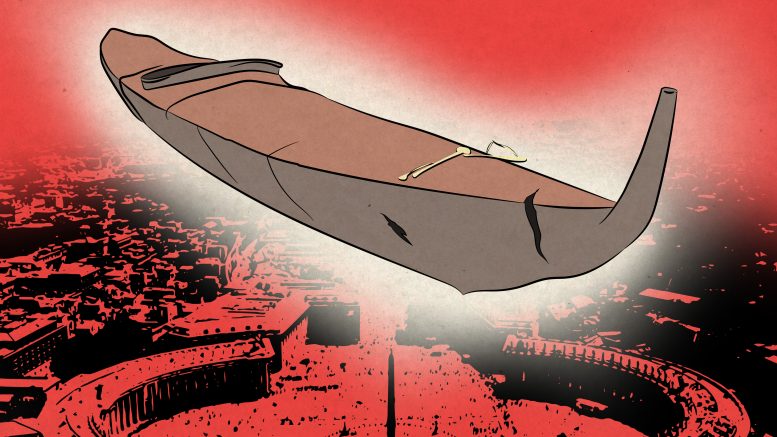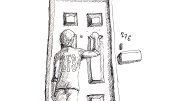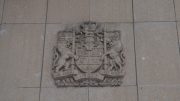Last week, First Nations, Métis and Inuit delegates — including representatives from Manitoba — were sent to the Vatican to meet with Pope Francis. The meetings were organized to start a conversation about reconciliation for the Catholic Church’s role in centuries of colonialism and genocide and made progress toward a public apology from the Pope — one of the 94 calls to action in the Truth and Reconciliation Commission’s 2015 report. For years, the Pope refused to recognize the church’s role in genocide, but delegates had success this time around.
Conveniently, the Pope’s apology blamed a couple bad apples while avoiding confronting the church’s institutional responsibility. “For the deplorable conduct of these members of the Catholic Church, I ask for God’s forgiveness and I want to say to you with all my heart, I am very sorry,” the Pope said. Many claim that the apology on its own does more for the church than it does for victims and argue an apology must be backed by political and material reparations.
Most Canadians assume the separation of church and state is an inherent part of Canada’s liberal constitution. Although it is generally inferred, neither state neutrality nor state separation from the church is demarcated in the constitution. This is likely because Canada’s claim to sovereignty as a settler state depends on two papal bulls passed in 1455 and 1493, respectively. The papal bulls deemed people Indigenous to Africa and the Americas undeserving of protection from European law or the church, therefore giving settlers the right to claim the land as their own under God. Together, the papal bulls are popularly known as the Doctrine of Discovery and they continue to influence Canadian policy and land claims.
Given that the papal bulls effectively gave Europeans the right — under their own Eurocentric laws — to claim and settle foreign lands and eventually form self-defined sovereignties, the bulls form the legal foundation that policies like the Indian Act have rested on throughout Canada’s short history. As many are hopefully aware, it was the Indian Act that informed Canada’s genocidal approach to Indigenous nations: banning their cultural practices, sending Indigenous children to residential schools and establishing Canada’s reserve system.
Why is this significant? As award-winning Indigenous journalist Tahieròn:iohte Dan David claims, “Without [the papal bulls], the ideological house of cards collapses.” While it would take far more than scrapping two outdated edicts to challenge Canada’s sovereignty, it nonetheless sets the stage for change and opens up a world of political possibilities for Indigenous nations.
From the sovereignty established by the papal bulls and the subsequent drafting of the Indian Act, Indigenous practices were banned and cultural material was seized. Initially, Canada outlawed potlatches — a redistributive ceremony integral to many West Coast First Nations’ governing systems — in 1884 with an amendment to the Indian Act, but this law cascaded into yet another amendment which banned all Indigenous dance and cultural material off-reserve after 1927. Refusal to abide by this law often resulted in imprisonment and fines.
Cultural material seized from this ban has ended up in museums across Canada and throughout the world — including the Vatican — as trophies of colonialism. Most of the Vatican’s collection of Indigenous cultural material was sent to Pope Pius XI in 1925 from missionaries for a global exposition which displayed over 100,000 pieces of cultural material.
The narratives that accompanied these items were of the realization of the settler-colonial project — a project that is prefaced upon the erasure of Indigenous populations. However, this triumphalist myth that Canada has been permanently settled — as if settler colonialism is a historical occurrence and not a system of governance and oppression — goes in direct contradiction of Indigenous activists fighting for their sovereignty, political institutions and self-determination. This damaging myth is being challenged by delegates at the Vatican who are asking for this important cultural material to be repatriated.
The fact that the Vatican is in possession of these items is directly correlated with the very violence that the Pope apologized for.
However, progress toward this end has not yet been elaborated and it is not clear the church is interested in co-operating. Archbishop Donald J. Bolen of Regina, Sask. went so far as to say that the artifacts were gifts bestowed to the church. “There is a spiritual dimension to gift-giving, and that can’t be lost,” Bolen claimed. While they may have been gifts from missionaries, experts say many of the artifacts were stolen.
Despite this, the church continues to treat this stolen cultural material as their own. On a visit to the Ethnological Museum Anima Mundi, Anishinaabe-kwe journalist Tanya Talaga attempted to photograph a stolen pipe stove and was asked to leave. Beyond this, the delegates were not granted access to the Vatican’s private collection.
All Indigenous people have a right to see and control how their cultural material is managed. Being asked to leave upon trying to spread this important knowledge displays an attitude of ownership over stolen material the same way Canada assumes ownership over stolen land.
The church supposedly feels remorse for its actions, yet it continues to act and uphold colonial institutions and practices. Unlike the Pope’s apology makes it seem, it was not simply a few misguided Christians that contributed to residential schools — it was and continues to be an institutional effort that began with two racist papal bulls. The continuity of this institutional colonialism lives on in the Vatican’s private collection of cultural material. If the church truly wants to take its first steps toward reconciliation, it should return what was stolen and tear up the papal bulls that made this theft possible.





